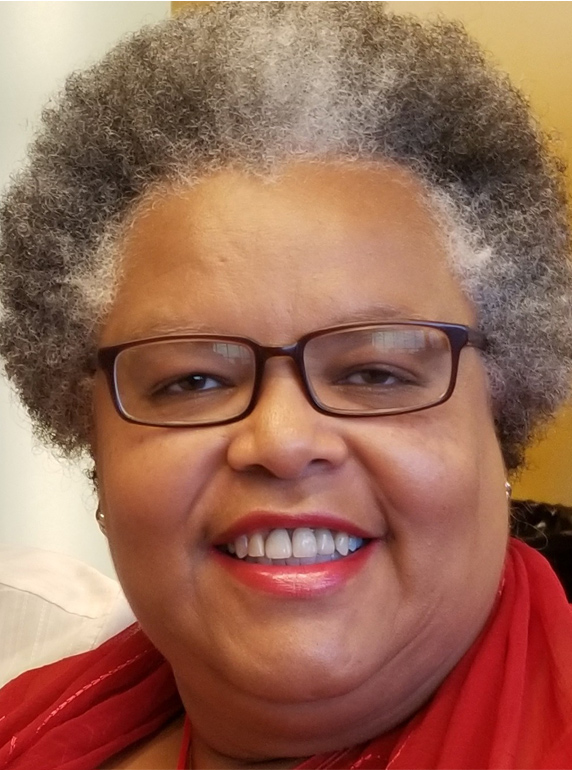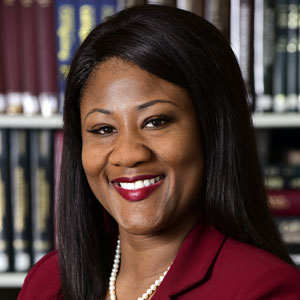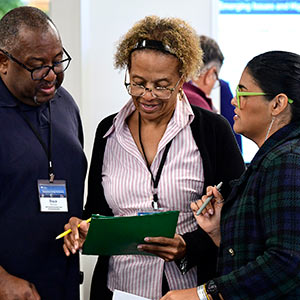 Riley said WRUC trains workers to respond to wildfires, extreme heat, flooding, droughts, and more recently, the COVID-19 pandemic. (Photo courtesy of Kevin Riley)
Riley said WRUC trains workers to respond to wildfires, extreme heat, flooding, droughts, and more recently, the COVID-19 pandemic. (Photo courtesy of Kevin Riley)Climate-related disasters and worker safety were among the topics discussed during the Dec. 3 Keystone Science Lecture featuring Kevin Riley, Ph.D., director of the Labor Occupational Safety and Health Program at the University of California, Los Angeles. Environmental emergencies and cleanup efforts can make individuals susceptible to harmful exposures, both immediately and in the long term, he noted.
Riley directs the Western Region Universities Consortium (WRUC), a four-university partnership funded by the NIEHS Worker Training Program (WTP). The consortium provides safety education to people involved in hazardous waste removal and disaster response.
Vulnerable workers
Addressing workers’ needs through education and training is best accomplished once potential health risks are identified and cultural contexts are considered, according to Riley. He explained that there are two categories of climate-vulnerable workers.
- Those who experience incidental exposure to environmental conditions that do not happen from the work itself but from the setting or the context where the work is conducted. Compared with the general public, these workers typically experience exposures of greater frequency, duration, and intensity.
- Disaster response and recovery workers, including those who respond when extreme climate events occur and those who carry out hazard assessment and cleanup in the weeks and months following the event.
“One thing we take seriously as an NIEHS-funded entity is that as these disasters emerge in our region, we need to be as responsive as we can be in making sure we extend our resources,” Riley said. “We want workers to have the support they need to be as safe as possible.”
 Beard expressed gratitude about work by WRUC to address the cultural and socioeconomic needs of climate-vulnerable workers. (Photo courtesy of Sharon Beard / NIEHS)
Beard expressed gratitude about work by WRUC to address the cultural and socioeconomic needs of climate-vulnerable workers. (Photo courtesy of Sharon Beard / NIEHS)Workers in both categories can experience a range of hazards and environmental exposures, so education and training should vary accordingly, he added. Cultural, social, and economic characteristics also are important considerations, noted Riley.
For example, WRUC developed Spanish-language training for wildfire second responders in California, and the consortium fine-tuned its education for tribal groups in southwest and rural Alaska to account for their unique needs.
“We know it takes a lot to develop integrated training and make sure it is done within the cultural context of what is happening in communities,” said WTP Director Sharon Beard.
Resiliency is key
Resiliency training is also necessary because hazards from climate-related disasters can be worsened by overlapping environmental issues, according to Riley.
“We have outdoor workers who face extreme heat and wildfire smoke at the same time,” he said. “So, you’re telling them to wear respirators to protect themselves from poor air quality, yet that in turn is adding an additional burden.”
Mental health is another important factor, noted Riley.
“There's the physical health component, but we also need to recognize the stress and emotional impact that come with all of these issues as well,” he said, noting that educational modules about mental health will be incorporated by WRUC in the future.
Activating community networks
Strategic partnerships fostered by WRUC have aided in rapid capacity-building during the COVID-19 pandemic, Riley told attendees.
COVID-19 recovery centers were developed, and community networks were tapped to help workers reduce transmission of the disease, understand effective use of personal protective equipment, and connect with peer support and counseling, among other services.
“That really put us in a good position for immediate response work around COVID-19,” Riley said.
Throughout the pandemic, WTP has conducted webinars and presentations on technical topics related to COVID-19(https://tools.niehs.nih.gov/wetp/?id=2592), with a focus on protecting workers who may be at risk of exposure to SARS-CoV-2, the virus that causes the disease. More information about occupational safety in the context of COVID-19(https://tools.niehs.nih.gov/wetp/public/hasl_get_blob.cfm?ID=13321) is available.
(Jennifer Harker, Ph.D., is a technical writer-editor in the NIEHS Office of Communications and Public Liaison.)









